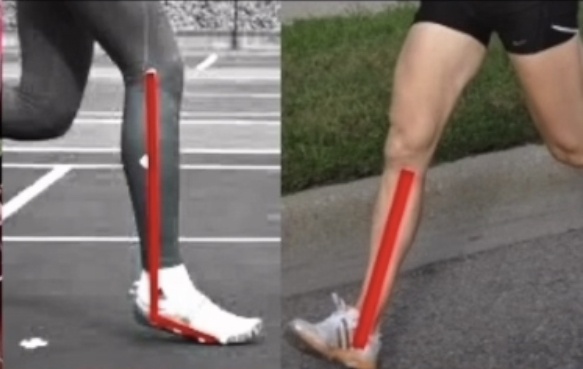One of the many ways forefoot running prevents injuries, like shin splints, is by increasing cadence or step-rate (the number of times your foot contacts the ground per/min). When you land with a forefoot strike (above left) when you run, cadence naturally increases because stride length is naturally reduced, which altogether, are proven mechanical components for unburdening the leg as compared with heel strike running (above right). Landing heel-first when running alters your mechanics in ways that lead to over-striding and reduced cadence, causing the foot to brake longer with the ground, which is largely to blame for most impact-related injuries. Read more here!

Bretta Riches
"I believe the forefoot strike is the engine of endurance running..."
BSc Neurobiology; MSc Biomechanics candidate, ultra minimalist runner & founder of RunForefoot. I was a heel striker, always injured. I was inspired by the great Tirunesh Dibaba to try forefoot running. Now, I'm injury free. This is why I launched Run Forefoot, to advocate the health & performance benefits of forefoot running and to raise awareness on the dangers of heel striking, because the world needs to know.
BSc Neurobiology; MSc Biomechanics candidate, ultra minimalist runner & founder of RunForefoot. I was a heel striker, always injured. I was inspired by the great Tirunesh Dibaba to try forefoot running. Now, I'm injury free. This is why I launched Run Forefoot, to advocate the health & performance benefits of forefoot running and to raise awareness on the dangers of heel striking, because the world needs to know.
Latest posts by Bretta Riches (see all)
- Cushioned Running Shoes Found to Be Bad for Ankles - 23/04/2024
- Forefoot Running and Achilles Pain - 19/04/2024
- Does Foot Strike Really Matter in Running? YES! - 17/04/2024

